This week we were asked to create a research plan on lighting. I’m interested in finding out about film and lighting- focusing on the horror genre.
Horror movies work well using little lighting in their scenes to create a cautious effect and is used to make the audience feel uneasy as they cant see all that is going on.

In this, I want to find out the different kinds of lighting used in horror films and what effects this creates. I’ve decided to focus on horror films as I find the lighting in this very interesting and as it doesn’t use that much light, I like the effects it can create. I also think the lighting in horror movies is under appreciated and not talked a lot like other lighting in genres such as film noir which is highly well known for its effective lighting.
UNDER LIGHTING
Horror movies use a lot of close up shots. This requires the lighting to be on the face so its the focus of the shot. Having a light underneath the face brings out the shadows on parts of the face and highlights other parts, bring out a skull like shape on the face. This is typically done with just a simple flashlight or a simple light and is used typically when someone is trying to tell a scary story. This is a cheap way to create low level lighting on the face as it only requires somewhere dark and a flashlight. The illumination on the face helps focus on the expression as it normally filmed as a close up shot.
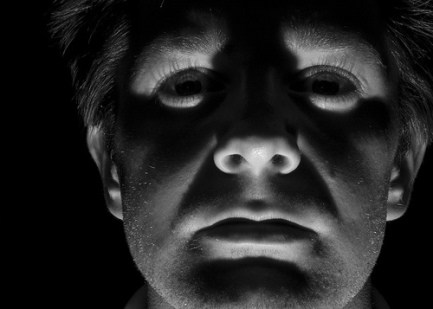
As people are used to seeing natural light occur from above (the sun and over head lights), it creates fear seeing the shadows and highlights on the face and creates a warped effect.
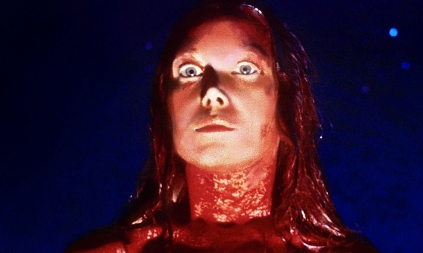
In this scene from Carrie (1976), the lighting underneath her face is effective as it captures her emotions clearly, showing her shock and anger.
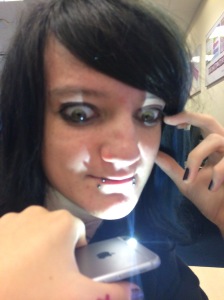
This was quick test in class of the lighting. For this I just used a phone light to see where the face was highlighted. Although this shot was taken with my own phone camera and the light can still be seen in the shot, it’s still effective and useful as I can use it for reference later on if I decided to have a light placed under someone so I’ll know where the light will highlight on the face.
LOW LEVEL/KEY LIGHTING
Low level/key lighting is very much used in horror movie as it creates a creepy atmosphere. This helps create shadows which can add to the atmosphere. The shadows help create mystery to the shot and can often create tension as its not always clear what the shadow is. The lights are normally at eye level or lower.
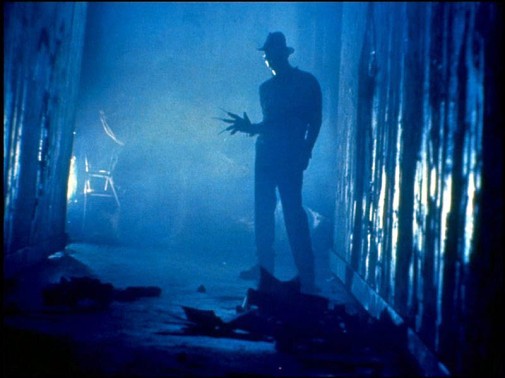
This scene from Nightmare on Elm Street (1984) is a good example of low level lighting as it focuses on the character without giving details such as facial expression and creates a silhouette. It also is unclear what is behind him which adds mystery and tension to the scene.
This effect is created using three point lighting, key light, fill light and back light. This helps create shadows and adds depth to them.
Old horror movies that couldn’t have used colour and had limited technology relied on shadows heavily to create suspense and a creepy atmosphere. A movie that does this particularly well is Nosferatu (1992).
(MadameMasque, 14th April 2011)
In this scene, the shadowy figure as it climbs the stairs adds a creepy atmosphere. The fingers especially stand out, appearing elongated and capturing the silhouette of Graf Orlok well.
Creating the shadows in the scene and choosing what is shown and what’s not helps with the horror genre as things can easily be hidden in the shadows and the audiences focuses on something else. This can help with the shock factor of horror.
LIGHTING GELS
Coloured lighting created using lighting gels can also be highly effective. An example for this is The Ring (2002) that uses lots of green lighting to create a sick and eerie feel to the scene.
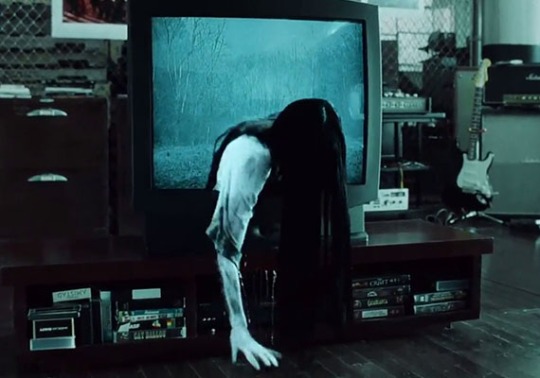
This is created normally by either editing the contrast after the footage has been shot or by using special coloured lights.
These are called gels. Lighting gels are placed over the light to project a colour. Common colours used in horror movies are greens or reds.
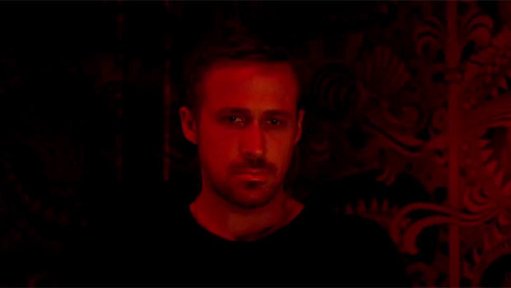
This research was incredibly helpful as I learnt about a lot of different lighting that is commonly used in horror movies. I honestly didn’t realise there were was so much that went into each shot, especially the low level/key lighting shots. I think I want to focus on horror movies in the future so this research on horror movie lighting will be very helpful. I find horror movies very interesting and like how much suspense they can create especially using lighting and sound effectively.
REFERENCES:
- Dreamworks, (2002) Still from The Ring (2002), Available at: http://movieripped.com/the-ring-2002-free-full-movie-download-hd/, (Downloaded: 26th September 2016)
- Lemar Barrett, (9th January 2014), Available at: http://lemarbarrett.blogspot.co.uk/2014/05/research-and-planning-this-essay-will.html, (Downloaded: 26th September 2016)
- MadameMasque, (14th April 2011), Nosferatu shadow scene, , Available at: https://www.youtube.com/watch?v=mCUW4SwmfGc, (Accessed: 26 September 2016)
- New Line Cinema, (1984), Still from Nightmare on Elm Street (1984) ,Available at: http://bfory.blogspot.co.uk/2012/02/stereotypical-horror-lighting.html, (Downloaded: 26th September 2016)
- Red Bank Films, (1976), Still from Carrie (1976) ,Available at: https://www.theguardian.com/books/2014/apr/04/carrie-stephen-king-horror, (Downloaded: 26th September 2016)
- Space Rocket Nation, (2013) Still from Only God Forgives (2013), Available at: http://entertainment.ie/cinema/news/Ryan-Gosling-continues-to-be-a-violent-sexpot-in-new-Only-God-Forgives-trailer/200960.htm, (Downloaded: 28th September 2016)
- Warner Bros, (1973), Still from the Exorcist (1973), Evil awaits Father Lancaster Merrin ,Available at: https://search.credoreference.com/content/topic/exorcist_motion_picture, (Downloaded: 26th September 2016)
Leave a comment